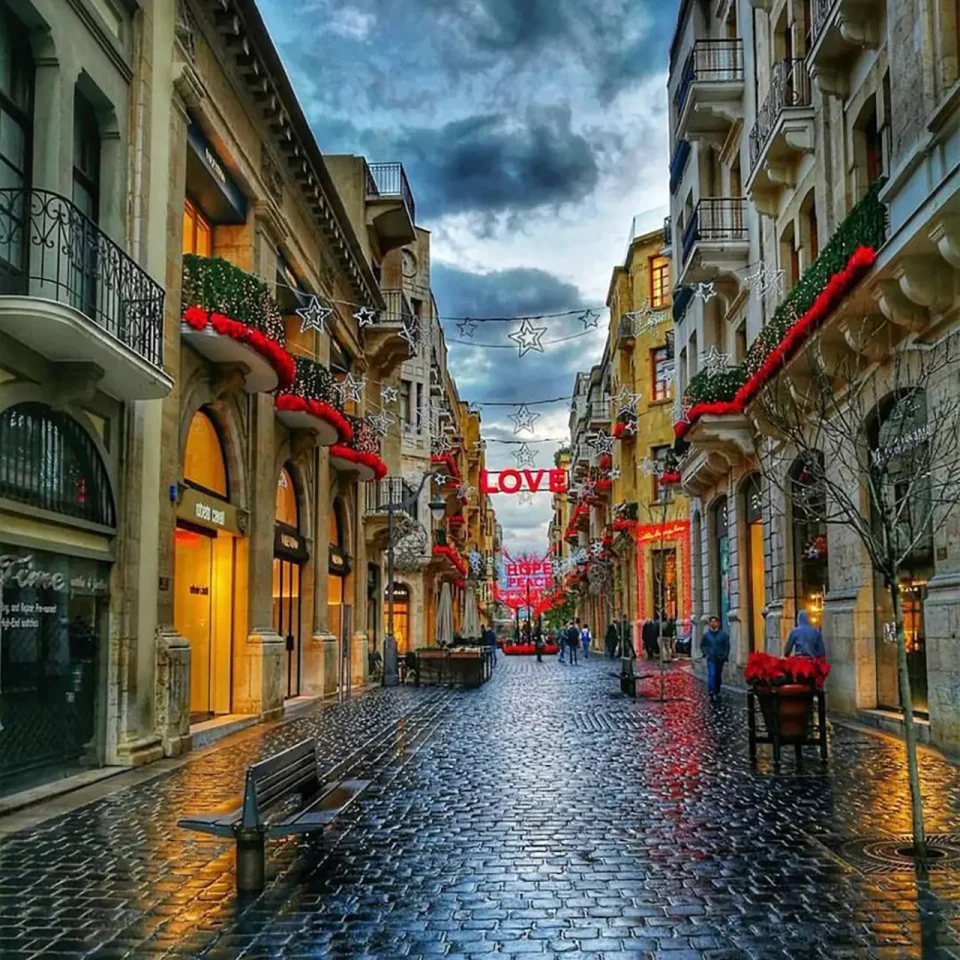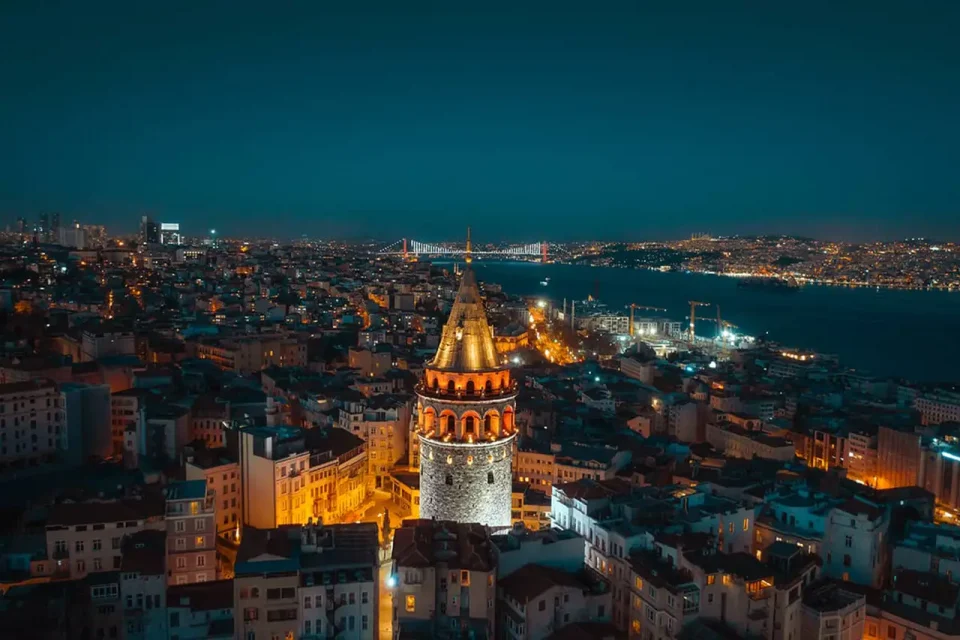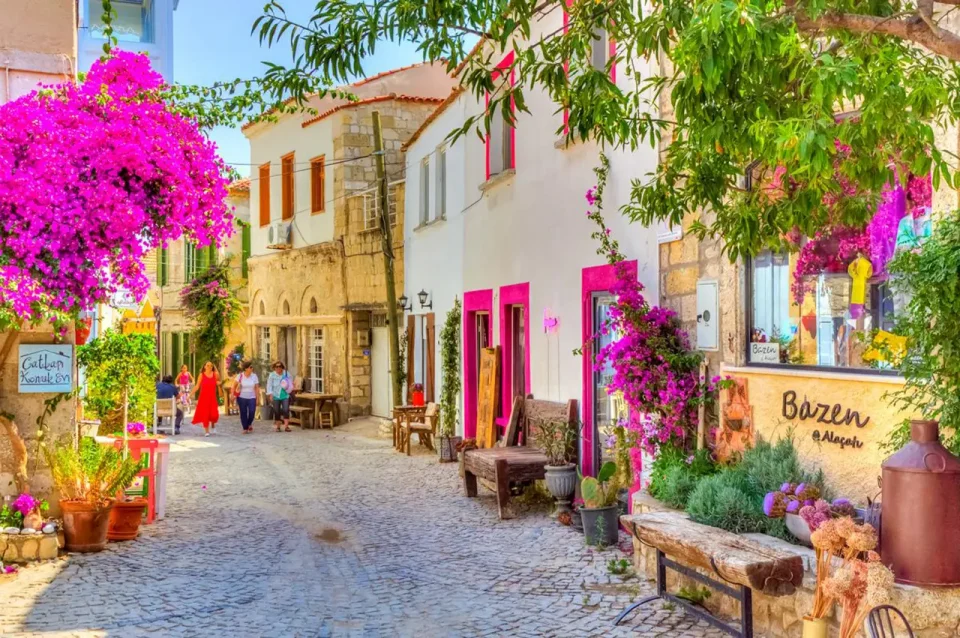Beirut, the vibrant capital of Lebanon, is a city that truly encompasses a rich history, diverse culture, and stunning architecture. With its lively atmosphere, warm and welcoming people, and mouthwatering cuisine, Beirut is a destination that should be on every traveler’s bucket list. In this blog post, we’ll take you on a journey through the top 10 must-visit destinations in Beirut, offering you an unforgettable experience of this captivating city.
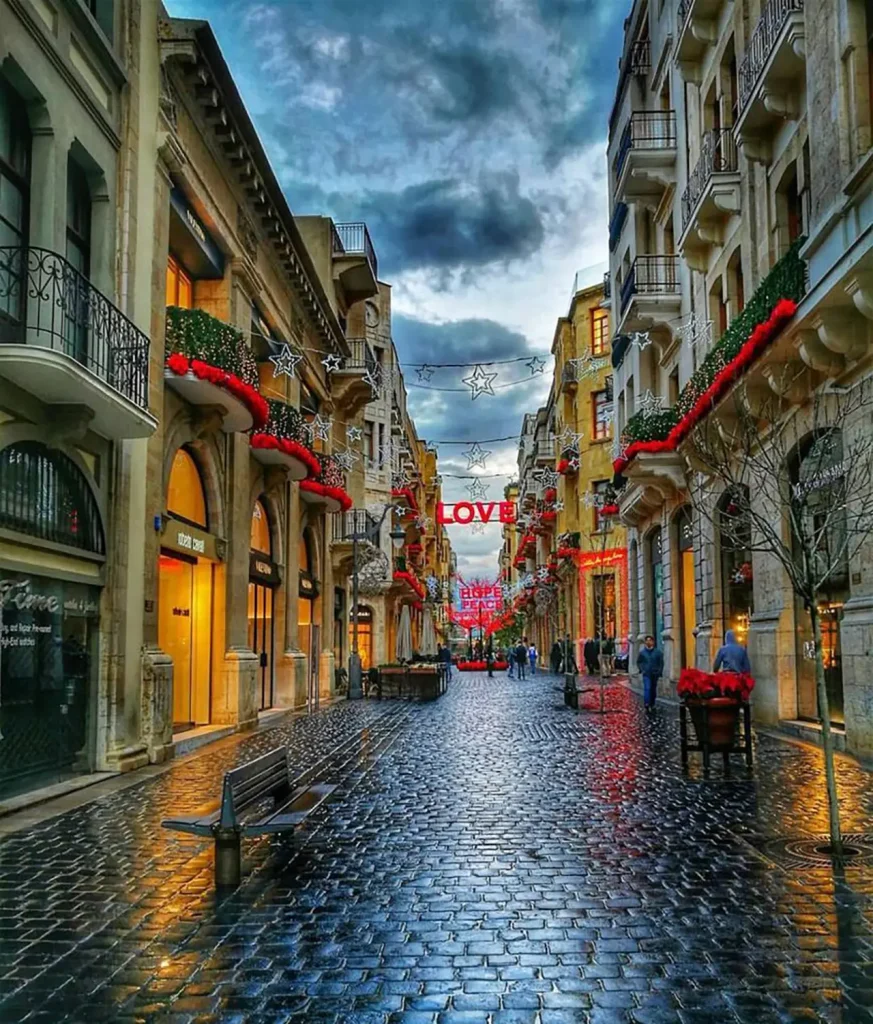
Table of Contents
Top Places to Visit
Beirut, Lebanon’s bustling capital, is a city that boasts a rich cultural tapestry, fascinating history, and awe-inspiring architecture. With its lively ambiance, hospitable locals, and delectable cuisine, Beirut is a destination that should be on every traveler’s bucket list. In this comprehensive blog post, we’ll delve into the top 10 must-see attractions, offering you an unforgettable experience of this mesmerizing city.
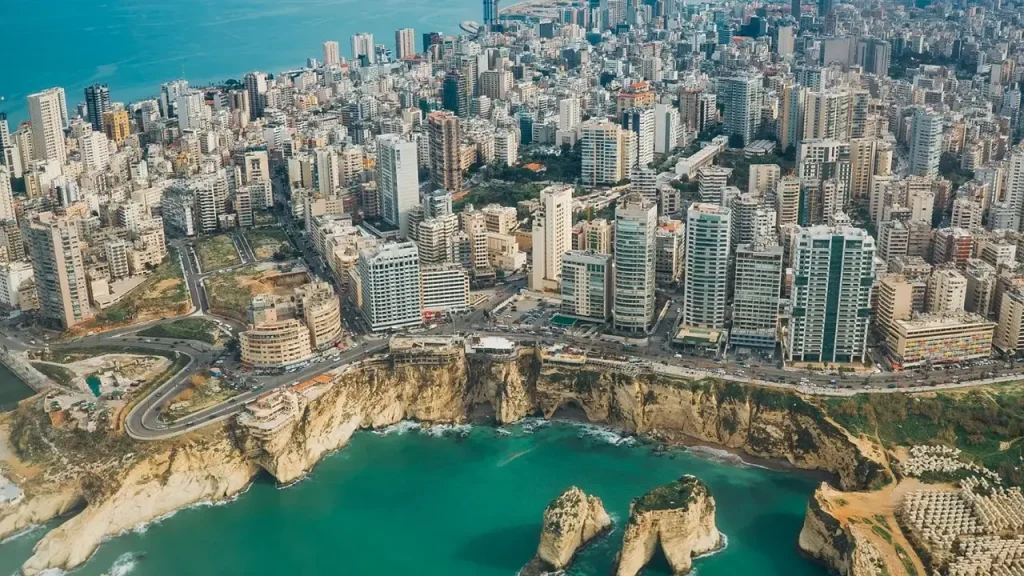
1- Zaitunay Bay: Luxurious Waterfront Promenade
Zaitunay Bay is an elegant waterfront destination that is perfect for those seeking a blend of luxury and relaxation. With high-end restaurants, cafes, and shops lining its promenade, you can enjoy a leisurely walk while taking in the breathtaking views of the Mediterranean Sea. Be sure to snap some photos of the stunning yachts and boats docked at the marina for memories that will last a lifetime.
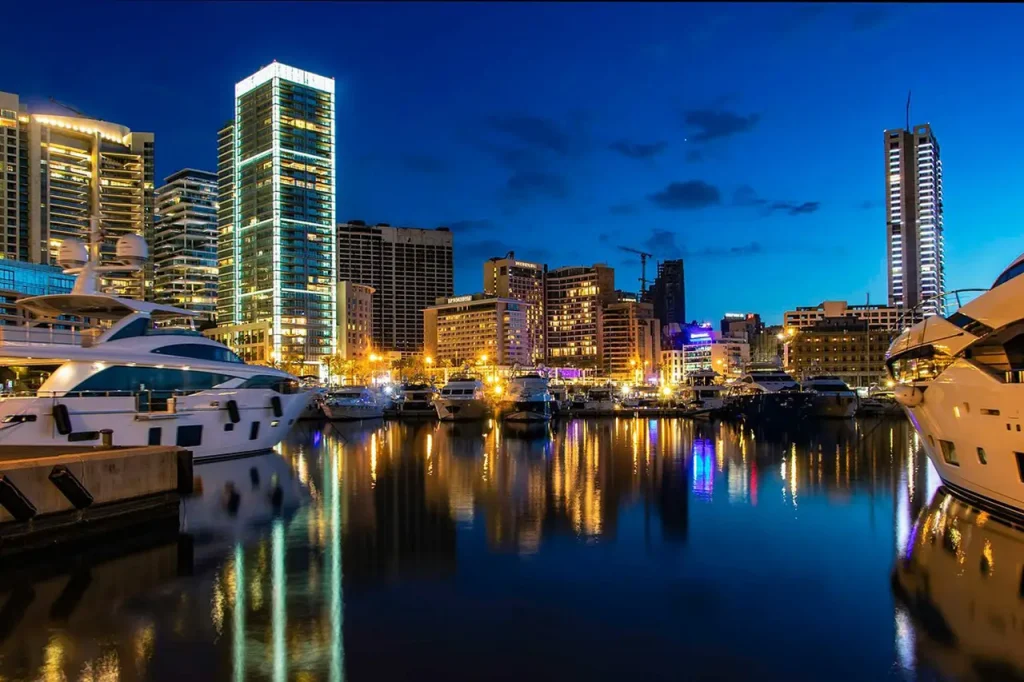
2- The Beirut Souks: A Modern Shopping Experience in the Heart of the City
Nestled in the city’s central district, the Beirut Souks provide visitors with a contemporary shopping experience steeped in traditional Lebanese charm. Here, you’ll find a mix of international and local brands, as well as a lively atmosphere filled with street performers and delicious food stalls. The souks are an excellent place to buy souvenirs, including handcrafted jewelry, textiles, and traditional Lebanese sweets.
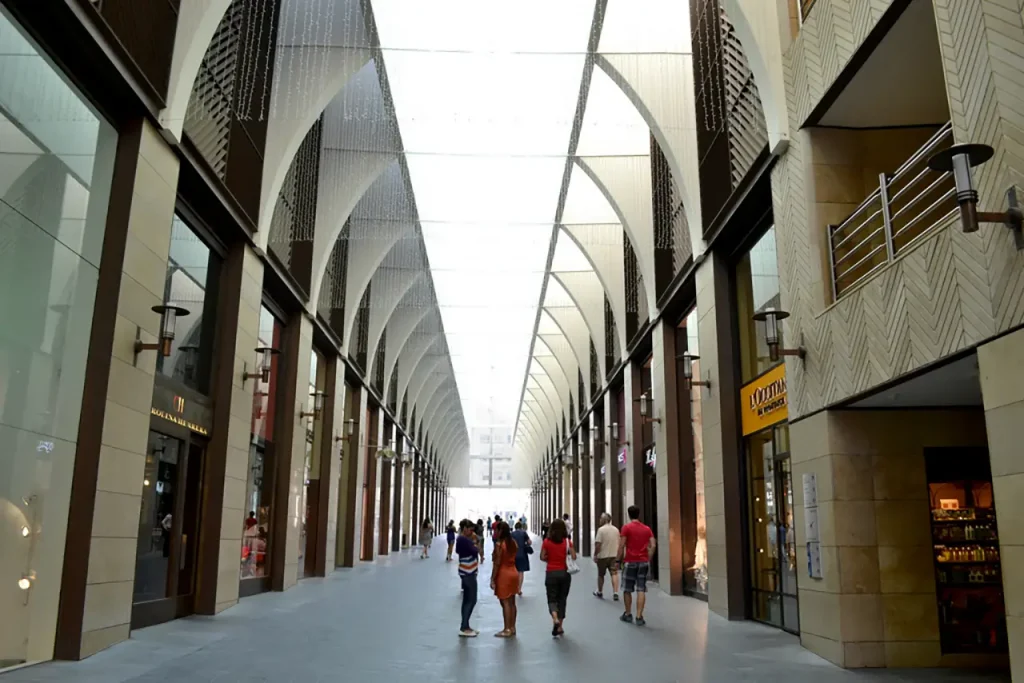
3- Mohammad Al-Amin Mosque: A Testament to Beirut’s Architectural Beauty
One of the most iconic landmarks in Beirut, the Mohammad Al-Amin Mosque, also known as the Blue Mosque, is an architectural masterpiece that showcases the city’s rich history and religious diversity. The mosque’s breathtaking Ottoman-inspired design, with its towering minarets and intricate blue dome, creates a serene atmosphere perfect for quiet contemplation or admiring its beauty from the outside.
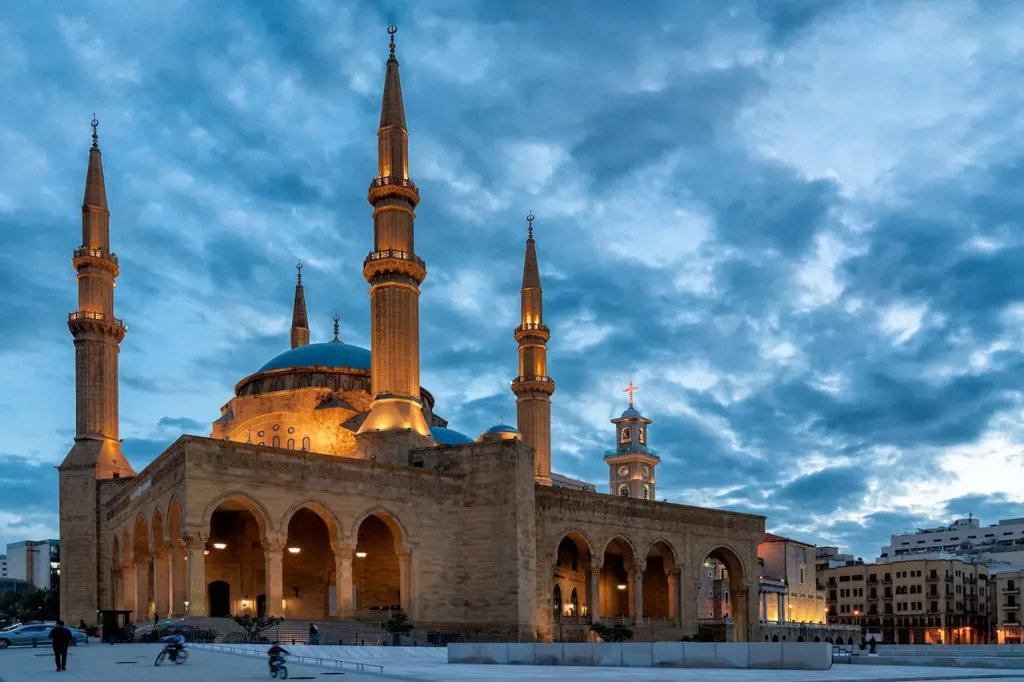
4- The National Museum of Beirut: A Journey Through Lebanon’s History
The National Museum is the city’s premier cultural institution, housing a vast collection of artifacts and relics from Lebanon’s rich history. Spanning from prehistoric times to the Ottoman era, the museum offers visitors an immersive experience of Lebanon’s past, showcasing its cultural, social, and artistic evolution throughout the centuries. This is a must-visit destination for history enthusiasts and those curious about Lebanon’s fascinating heritage.
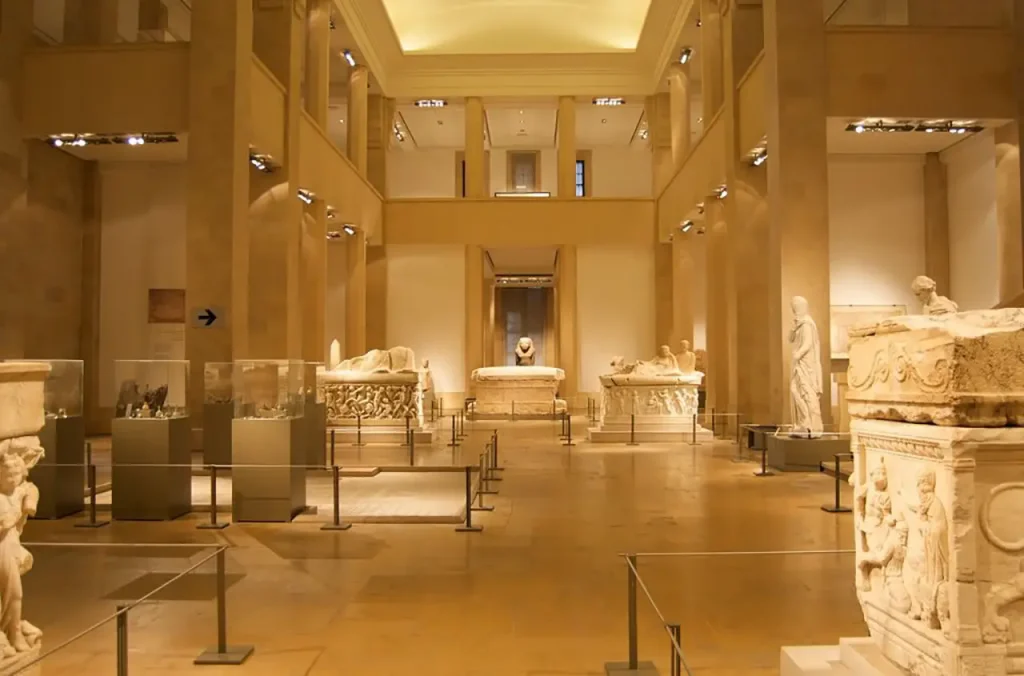
5- The Corniche: Bustling Seaside Promenade
The Corniche is a popular seaside promenade that stretches along the Mediterranean coast, offering stunning views of the ocean and the city’s skyline. Perfect for a leisurely stroll, morning jog, or bicycle ride, the Corniche is a favorite among locals and tourists alike. Be sure to stop at one of the many cafes and enjoy a refreshing drink or a delicious Lebanese treat while taking in the incredible scenery.
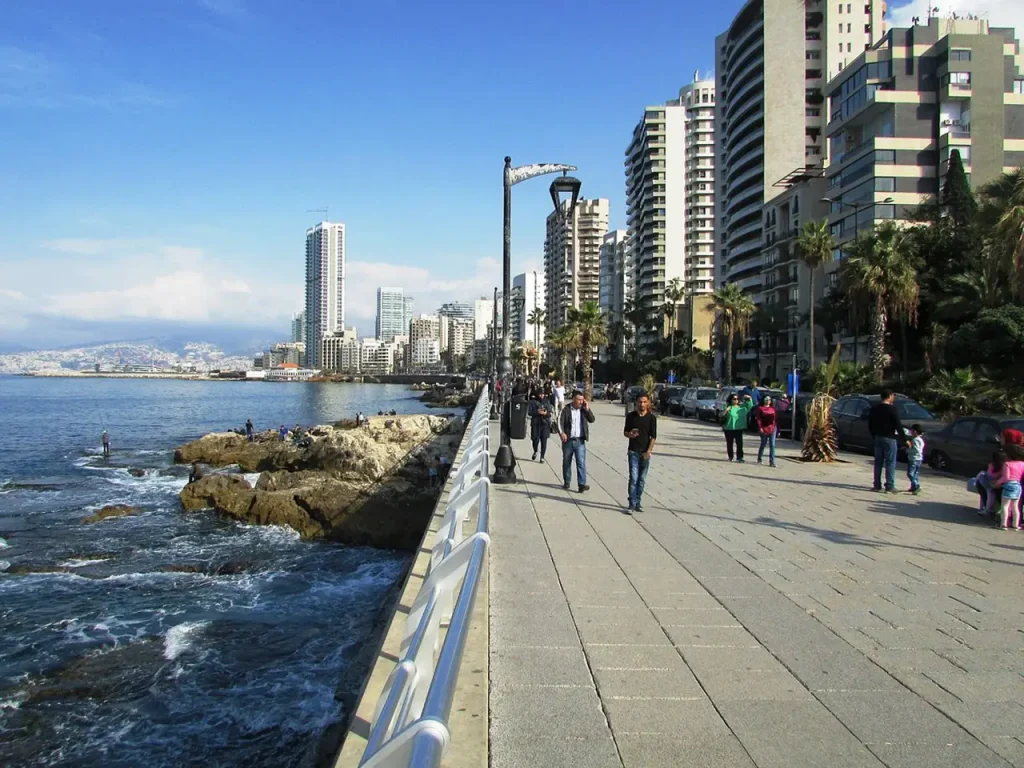
6- Raouche Rocks: Iconic Natural Wonder
Raouche Rocks, also known as Pigeon Rocks, are a pair of dramatic limestone formations that rise majestically from the Mediterranean Sea. Located off the coast of the Raouche district, these natural wonders are a must-see attraction in Beirut. The best way to appreciate their beauty is by taking a leisurely stroll along the Corniche or by enjoying the view from one of the many cliffside cafes and restaurants.
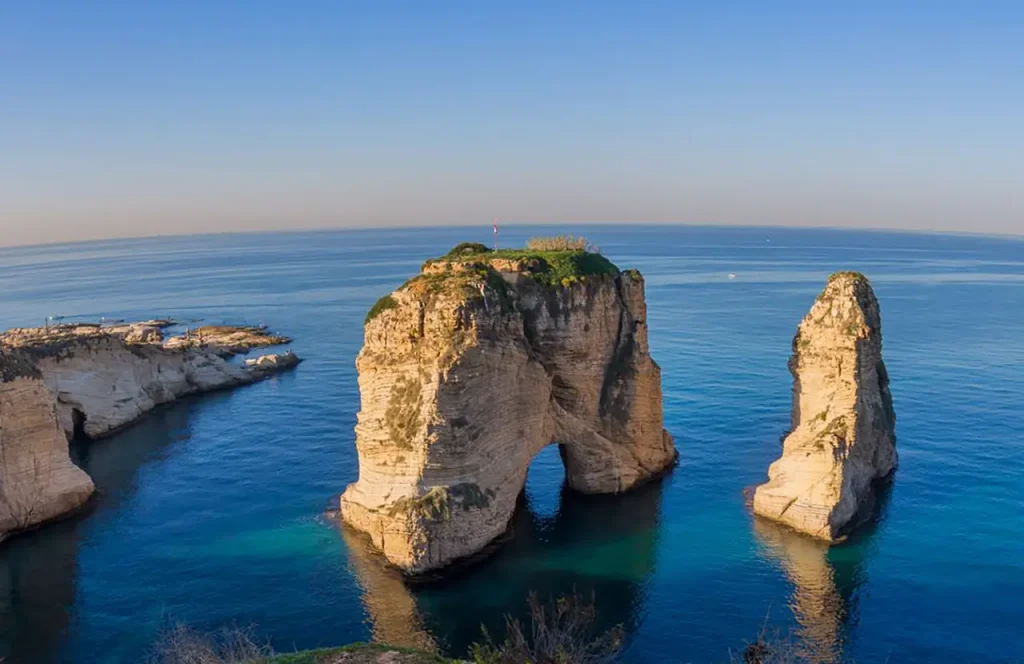
7- Gemmayzeh and Mar Mikhael: Trendy Art and Entertainment Districts
Gemmayzeh and Mar Mikhael are two adjacent neighborhoods in Beirut known for their vibrant art and entertainment scenes. Filled with trendy bars, cafes, art galleries, and boutiques, these districts offer a unique blend of traditional
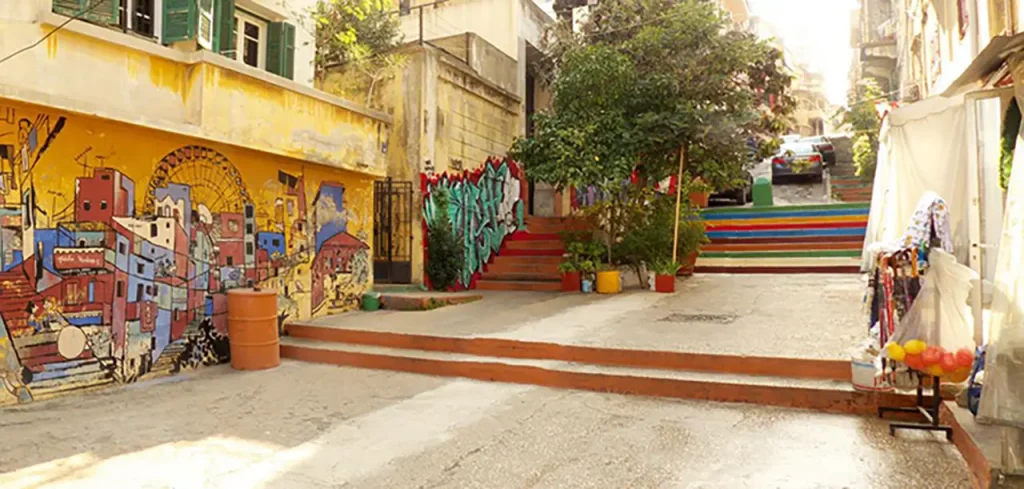
Lebanese charm and modern urban vibes. Take a leisurely walk along the famous Gouraud Street, where you can explore the colorful street art, sample local culinary delights, and immerse yourself in the city’s energetic nightlife. These neighborhoods are the perfect places to experience Beirut’s lively spirit and creative energy.
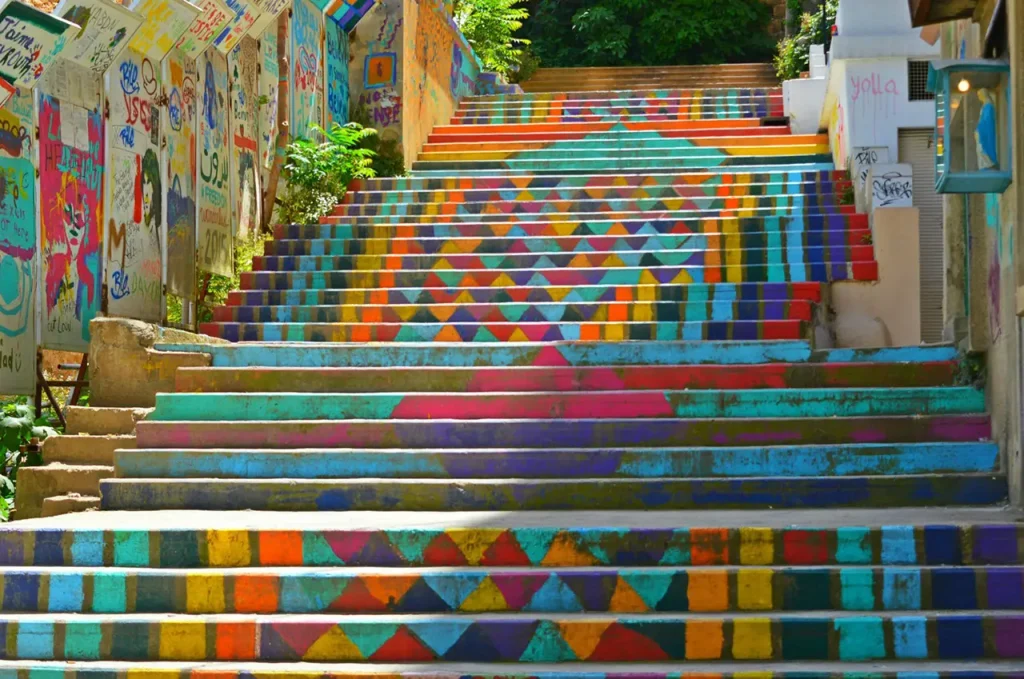
8- Roman Baths: A Glimpse into Ancient
Located in the heart of Beirut, the Roman Baths are a remarkable archaeological site that offers a fascinating glimpse into the city’s ancient past. This well-preserved public baths date back to the Roman era and feature intricate mosaic floors, columns, and other remnants that showcase the impressive craftsmanship of the time. While visiting the Roman Baths, you’ll get a sense of the daily life and leisure activities enjoyed by the ancient residents of Beirut.
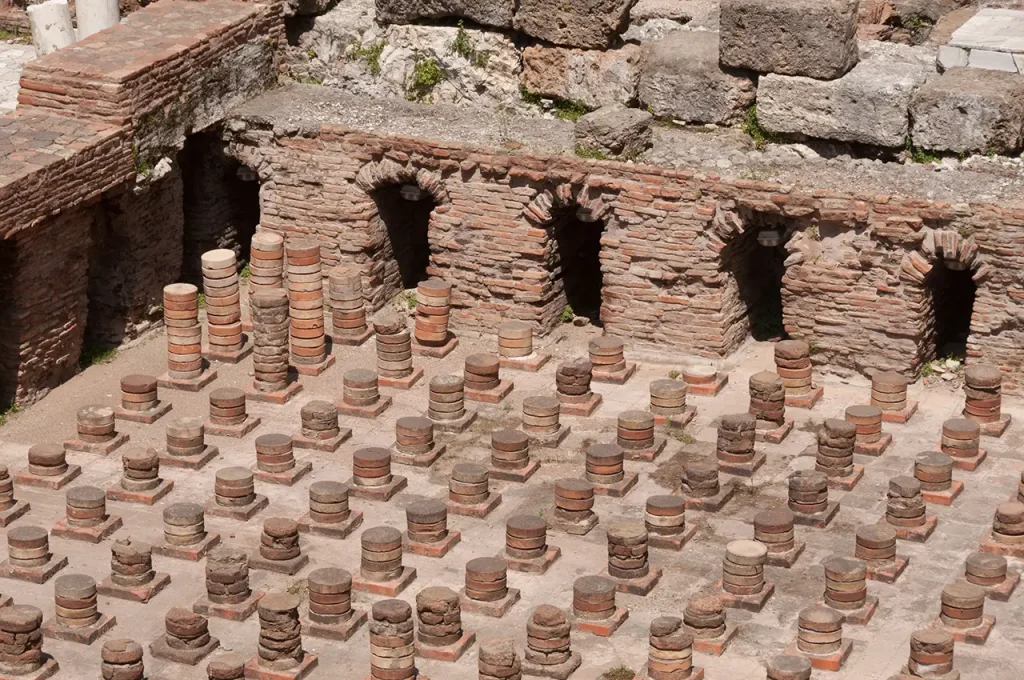
9- Sursock Museum: A Celebration of Lebanese Art
The Sursock Museum is a must-visit destination for art lovers, featuring an extensive collection of modern and contemporary Lebanese art. Housed in a beautifully restored 19th-century mansion, the museum showcases a wide range of paintings, sculptures, and other artworks that celebrate Lebanon’s vibrant artistic heritage. In addition to its permanent collection, the Sursock Museum hosts temporary exhibitions, workshops, and cultural events, making it a dynamic hub for Beirut’s art scene.
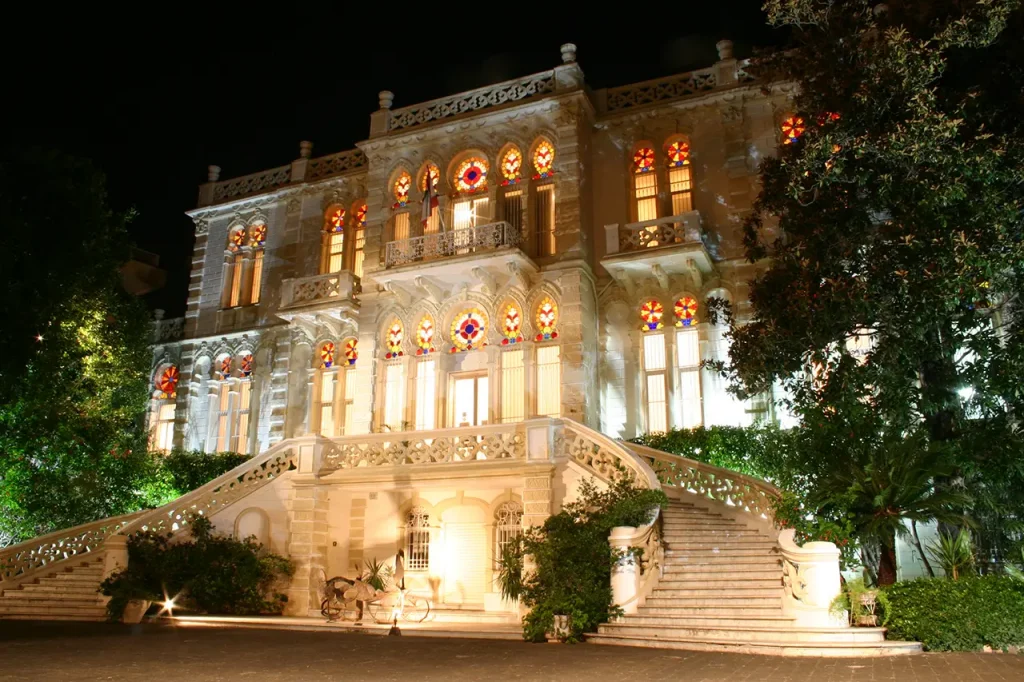
10- Jeita Grotto: An Underground Wonderland Just Outside Beirut
Although not located within the city limits, no trip to Beirut is complete without visiting the Jeita Grotto, a spectacular limestone cave system just a short drive from the capital. The grotto features two separate caves, an upper and a lower one, both filled with stunning stalactite and stalagmite formations. Visitors can explore the upper grotto on foot and take a serene boat ride through the lower grotto, marveling at the incredible natural beauty that lies beneath the earth’s surface.
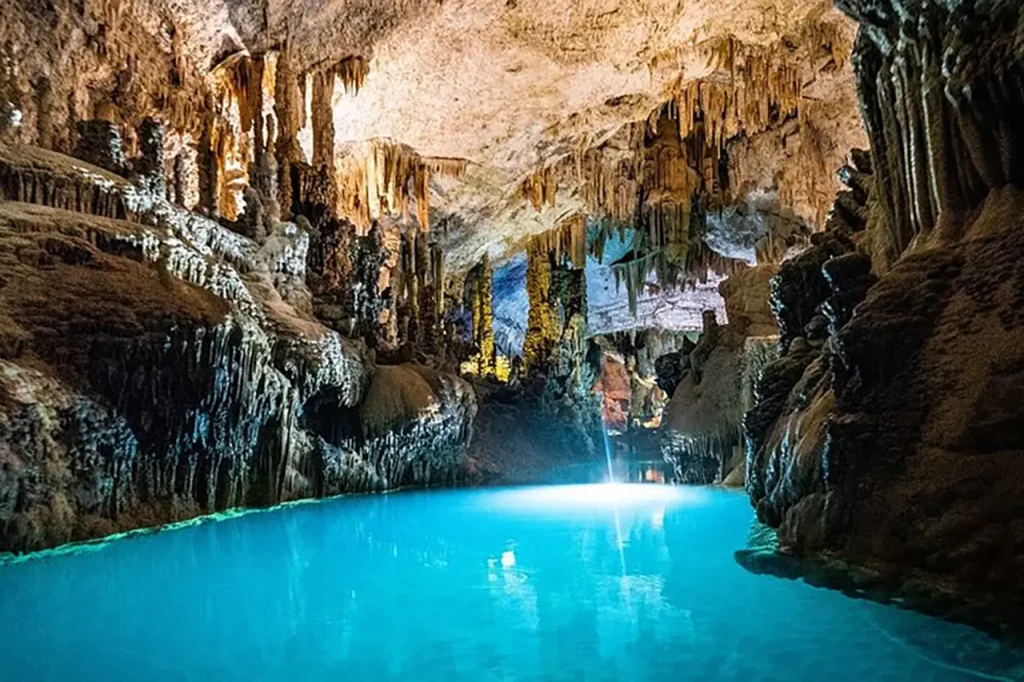
Brief History
Beirut, the capital of Lebanon, has a rich and complex history that spans thousands of years. Situated along the Mediterranean coast, Beirut’s strategic location has made it a key player in the region’s development and a melting pot of different civilizations.
Ancient History: dates back to at least the 15th century BCE when it was a small coastal settlement inhabited by the Canaanites, who later became known as the Phoenicians. The city was originally called Berytus, and it flourished as a significant maritime and trade center in the ancient world. The Phoenicians were renowned for their seafaring skills and established trade routes across the Mediterranean, connecting Beirut to various ancient civilizations, including Egypt, Greece, and Rome.
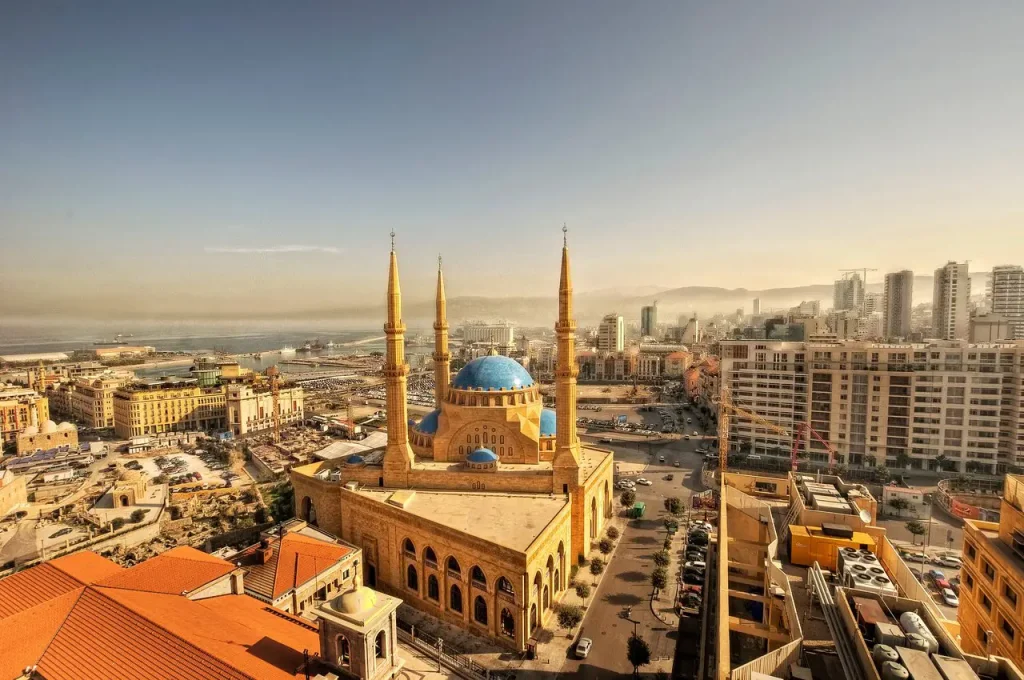
Roman Period: In 64 BCE, the City was annexed by the Roman Empire and became a thriving metropolis in the province of Phoenicia. The Romans brought significant development to the city, building temples, a law school, theaters, and other public structures. Berytus, as it was known at the time, was an important intellectual center, particularly famous for its law school, which attracted students from all over the empire.
Byzantine and Arab Rule: After the fall of the Western Roman Empire, the City remained under the control of the Eastern Roman Empire, also known as the Byzantine Empire. During this period, Christianity became the dominant religion in the region. In 551 CE, a massive earthquake and subsequent tsunami devastated Beirut, leading to a decline in its importance.
In 635 CE, City was captured by Arab Muslim forces during the expansion of the Rashidun Caliphate. The city became part of the Umayyad and later Abbasid Caliphates and its population gradually converted to Islam. Under Arab rule, Beirut’s significance as a commercial and administrative center began to revive.
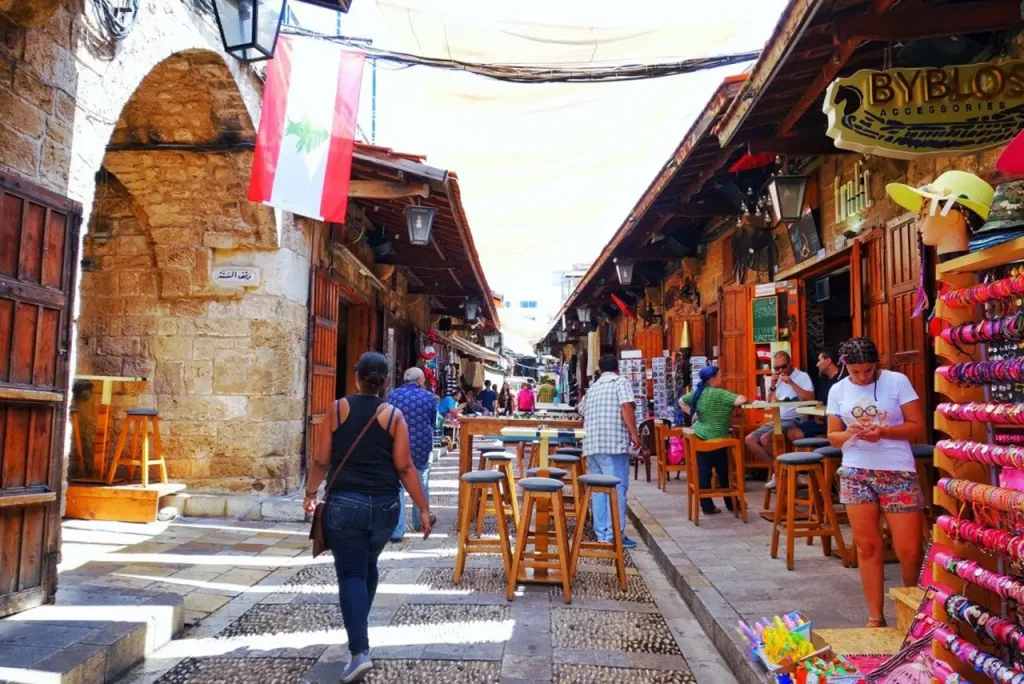
Crusader and Mamluk Rule: In 1110, during the First Crusade, the Crusaders captured the city and incorporated it into the County of Tripoli, a Crusader state. The city was a key coastal stronghold during the Crusader period but fell to the Mamluk Sultanate in 1291. Under Mamluk’s rule, Beirut experienced a period of relative stability and served as an important port and regional center.
Ottoman Era: In 1516, the Ottoman Empire conquered the Levant, and the city became part of the empire for the next four centuries. The city’s strategic location and port allowed it to maintain its importance as a commercial center. In the 19th century, Beirut experienced significant growth as it became a central hub for trade between Europe and the Middle East. The introduction of Western-style education and the establishment of various missionary schools during this period transformed the city into a center of culture and learning.
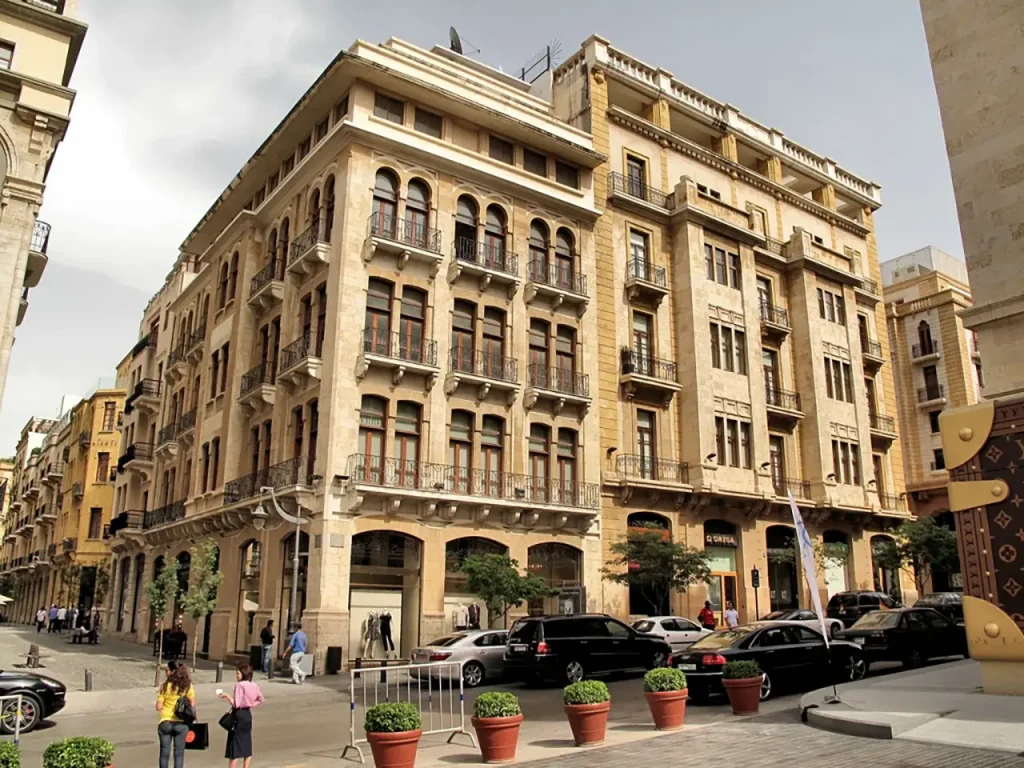
French Mandate and Independence: After the collapse of the Ottoman Empire following World War I, the League of Nations granted France a mandate over Lebanon in 1920. The City became the capital of the newly created state and continued to develop as a cosmopolitan center. In 1943, Lebanon gained its independence from France, with Beirut remaining the capital city.
Civil War and Modern Beirut: From 1975 to 1990, Lebanon was embroiled in a brutal civil war that left Beirut divided and severely damaged. After the war, a massive reconstruction effort was undertaken to rebuild the city and restore its former glory. Today, Beirut is a thriving, modern metropolis that has preserved its rich history and cultural diversity, making it an alluring destination for travelers from around the world.
Our Latest YouTube Video
Conclusion
Beirut is a city that truly captivates the senses, offering a myriad of unforgettable experiences for travelers who are eager to explore its diverse culture, fascinating history, and breathtaking natural beauty. From luxurious waterfront promenades to ancient Roman ruins, and trendy art districts to serene mosques, Beirut’s top 10 must-see attractions are sure to leave a lasting impression on anyone who visits Lebanon’s enchanting capital. So pack your bags, and get ready for an adventure of a lifetime as you uncover the gems of Beirut!
